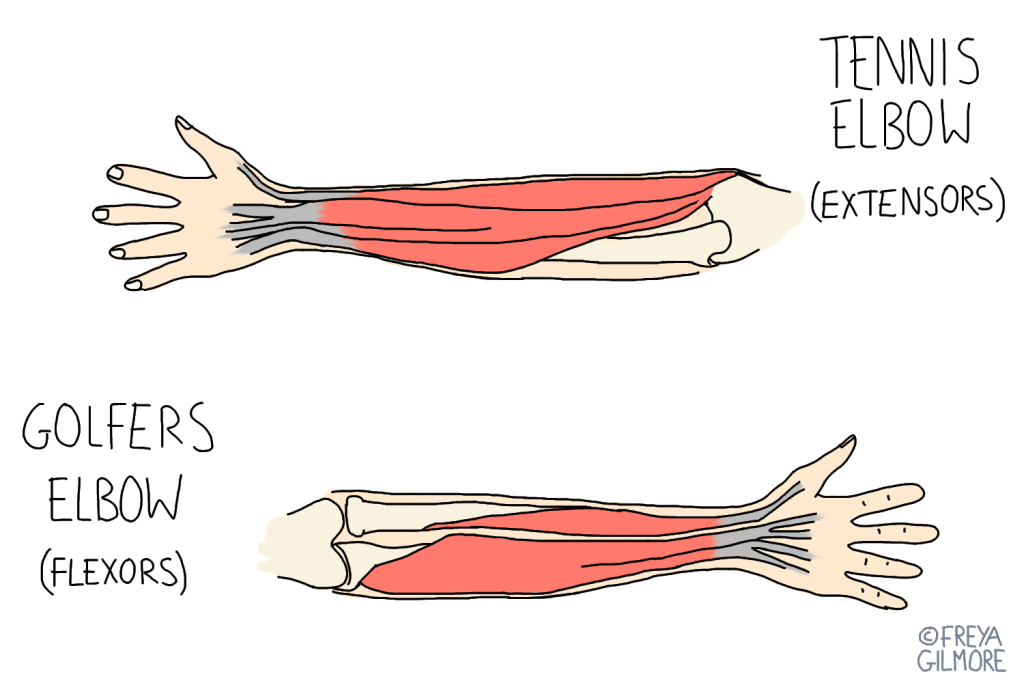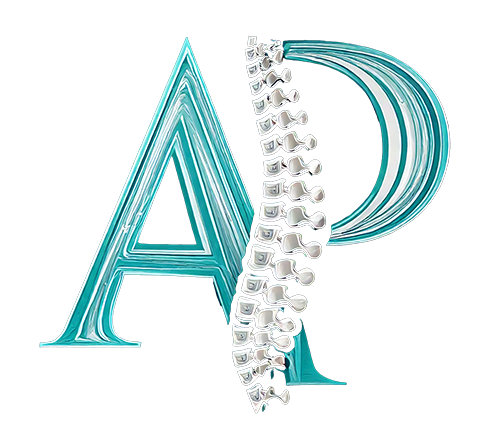Tennis Elbow
Tennis elbow is the common name for lateral epicondylitis. Although it can start as a simple muscle injury, the word “epicondylitis” tells us it’s become a bit more complicated. This means there’s inflammation where the end of the muscle meets the bone at the elbow.
Typical symptoms include pain and tenderness in the forearm and side of the elbow, especially during activity. This pain can also lead to a feeling of reduced strength. The inflammation can cause some swelling around the side of the elbow which is tender to touch. The body may also start compensating subconsciously. This might mean causing strains elsewhere in the arm or wrist as you move differently to avoid discomfort.

As the name suggests, tennis elbow can be a form of sports injury, but it doesn’t come on suddenly. Repetitive aggravation of the wrist extensor muscles irritates the junction between bone and muscle and causes localised pain and tenderness.
However, you don’t have to play tennis to develop this injury. Other sports can cause it in the same way, or even more innocuous things like carrying heavy shopping bags can bring it on. If left unmanaged it can develop beyond the usual muscle strain.
How your osteopath can help
Diagnosing tennis elbow is easily done, and although it can be a slow condition to rehabilitate, your osteopath can work with you to resolve it.
Relaxing off the muscles will reduce the pull on the bone and begin to let the whole area calm down. Your osteopath might also want to work more generally around the elbow, wrist, and shoulder to keep everything working well together. Advice for reducing or managing inflammation may also be appropriate.
Understanding the cause of the episode is important, especially if this is something that keeps coming back.
Tennis elbow vs golfer’s elbow
You may have heard of golfer’s elbow, another form of epicondylitis. Golfers elbow affects the medial epicondyle in the same way as tennis elbow affects the lateral epicondyle. Tight muscles or injury lead to inflammation around the muscular-bony junction. As before, you don’t have to play golf to develop it.
Repetitive overuse of the wrist flexor muscles predispose a person to developing golfer’s elbow. Playing a sport with a thin handle that requires you to grasp tighter can sometimes be enough to irritate the area, and prevention might be as simple as wrapping it with a thicker grip. Your osteopath can advise you on this.
The sooner you can address your tennis elbow, the better the prognosis. Book an appointment today.

